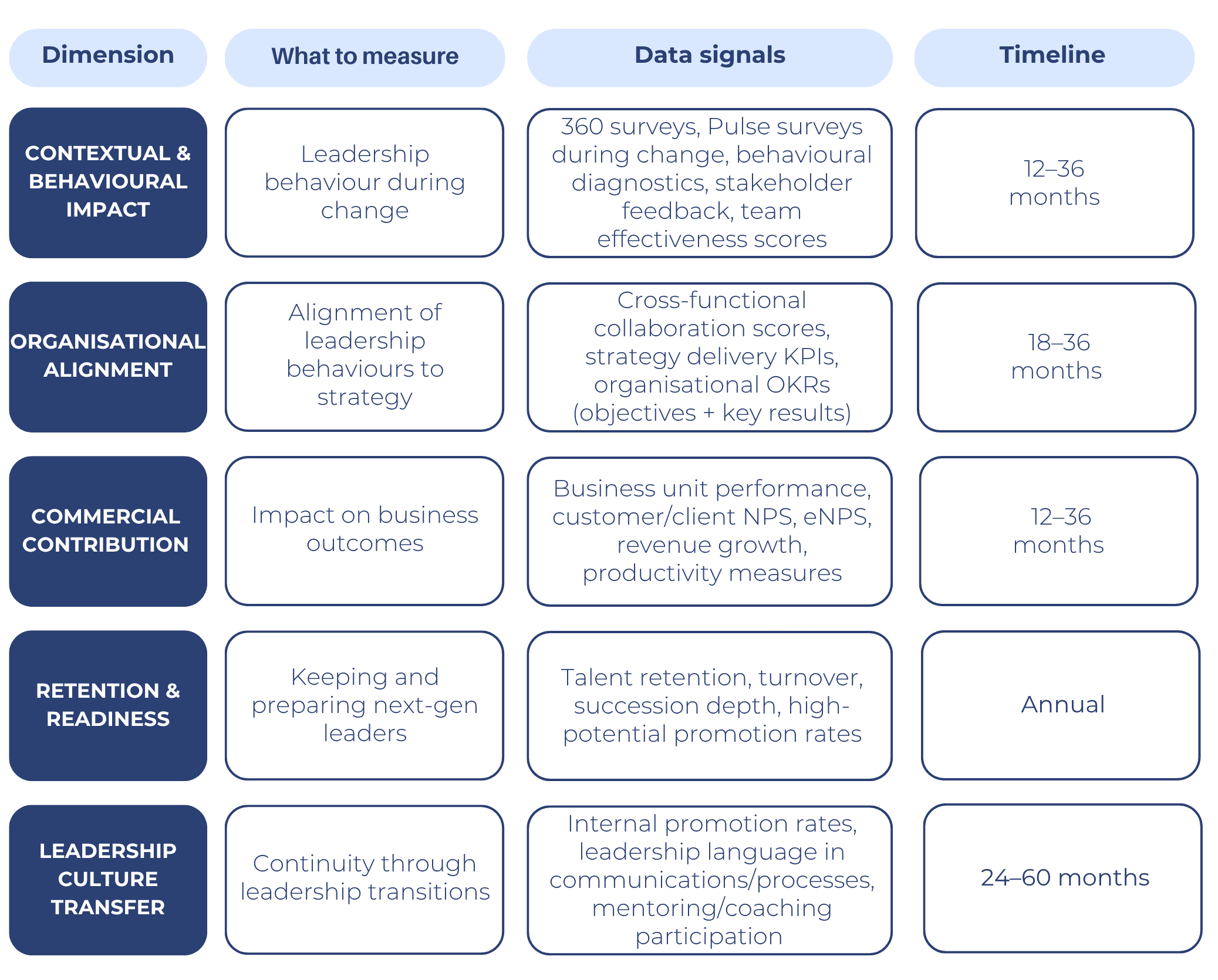In many organisations, leadership development is treated as a CEO-led initiative. These initiatives become a priority at one point in time for a leader, only to be shelved by the next.
This opinion piece presents a case for why leadership development and the capability of high-performing teams should be governed and championed by the Board and Chair, rather than being driven solely by the CEO or executive team.
Reactive, transactional, short-term: The real leadership risk
Too often, leadership development is reactive, triggered by a crisis or transformation, then parked. Many organisations view it as a transaction, rather than recognising it as a capability or an investment
Over the past four decades, companies have navigated waves of disruption, from oil shocks and global manufacturing shifts to the dot-com era, the GFC, COVID-19, geopolitical instability, regulatory reform, generative AI and more. This list isn’t exhaustive, but it reflects the scale and continuity of change leaders are expected to manage.
Change continues to be a constant for companies. So too leadership capability.
“What we’re seeing is a pattern. Companies often treat leadership as a program, rather than as an integral part of their strategy. The organisations that outperform make it part of their DNA, embedded into their purpose and strategy,” Virginia Mansell.
Embedding leadership development into governance
Boards that take leadership seriously don’t just approve the budget for a program; they shape the conditions for it to succeed. They see leadership development not as an HR initiative, but as a strategic imperative and critical governance lever.
When the Chair and Board sponsor leadership development over the long term, it becomes embedded in the organisation’s operations. It lasts longer than individual leaders, roles or market cycles.
At Microsoft, CEO Satya Nadella helped embed a culture of “growth mindset,” a concept originally developed by Stanford professor Carol Dweck. While the shift was modelled and championed by Nadella, its success was reinforced by broader systems including leadership practices, coaching infrastructure, and performance incentives. Although often seen as a CEO-led transformation, its endurance suggests strong alignment from the Board.
“There’s a reason people say culture eats strategy for breakfast. But it’s not about choosing one over the other. The organisations that thrive align both. They build a leadership culture that delivers strategy and neither competes,” Virginia Mansell.
Culture and strategy don’t align by chance. It takes conscious effort from leaders at every level, including the Board. As attention on organisational culture continues to grow, governance bodies are reinforcing its importance as a key area of oversight.
“Boards have a role in overseeing and influencing organisational and workplace culture, and many have elevated the importance of culture,” Mark Rigotti, Managing Director & CEO, AICD.
What long-term leadership commitment looks like
This example shows what’s possible when leadership development is built into the organisation’s strategy and operating system and not just championed by one leader. In SMG’s work with organisations across financial services and industrial sectors, we’ve seen similar long-term commitment to capability building, embedded through board and executive sponsorship.
SMG has worked with the APAC CEO of a global FMCG company on a five-year coaching initiative focused on culture change. The program was co-designed with a leading business school and used multiple delivery formats, including coaching circles. In another example at an APAC telecommunications company, the CEO and Chair championed an executive leadership program over five years to improve eNPS and embed leadership into the organisation’s DNA.
In a diversified listed Australian company with operations in home improvement, retail, health, chemical, energy and more, directors were actively involved in the Executive Development Program (EDP), not just endorsing it, but also attending meetings with leaders and emerging leaders as part of the process. That visible backing signalled that leadership development was at the core of the business. The EDP spanned a 10-year period, another indication that this was a long-term commitment.
These examples had two things in common: they were championed from the top and designed for the long term. The Chair, CEO, and Board treated leadership development not as a short-term intervention, but as a strategic lever for deep, lasting behavioural change. That level of sponsorship and consistency is what makes transformation possible.
“When Boards show up, it shifts the tone. Leaders often feel seen, supported and accountable. That’s when meaningful change can really be embedded,” Virginia Mansell.
“As a Board Director, I know how critical it is to ask: are we building a culture where leadership thrives regardless of who’s in the Chair or C-suite. If we’re not, we’re vulnerable,” Robyn Stubbs.
Boards that do this well treat leadership development the same way they approach financial risk or ESG. It’s not a once-a-year matter. It’s built into the board calendar, linked to the CEO’s KPIs, and part of regular conversations with People and Culture leaders.
Key questions every board should ask
Here are four questions every Board should be asking:
- Are our leadership development efforts aligned with business strategy and risk?
- Are we clear on what behaviours we are trying to embed, and why?
- How do we know those behaviours are taking hold?
- Are our successors ready for what’s next?
Boards that support leadership development aren’t just investing in capability, they’re reinforcing the organisation’s purpose, values, and long-term credibility with stakeholders. A strong leadership culture builds trust, sharpens decision-making, and improves how organisations respond to complexity and societal expectations.
“As a senior executive at an ASX50 property group, I worked directly with the Board over several years to reshape one of our largest revenue-generating business units. We had to shift from a product-led model to a deeply customer-centric culture. That meant overhauling structure, systems, people, technology, and KPIs, supported by longitudinal research. The Board’s ongoing support and engagement were pivotal to the transformation’s success,” Robyn Stubbs.
Measuring leadership development progress matters
Leadership ROI isn’t always immediate or linear. Traditional metrics like participation or satisfaction surveys rarely reflect the strategic impact.
In an age where data and analytics are accessible and expected, Boards and CEOs have more opportunity than ever to bring rigour to how leadership development is measured. Most organisations already have the data; they need the processes and discipline to use it.
Boards don’t need complex systems to measure leadership development. They do need visibility. These five dimensions help track progress using data that most organisations already collect. Of course, the validity and robustness of data will vary from one organisation to another, and the best indicators will often be unique to each business. The goal is progress, not perfection.
Five ways to measure leadership development progress

These dimensions help Boards and CEOs move beyond satisfaction surveys and ask: What capabilities are we building and how are they shaping performance?
Too often, organisations aim for measurement perfection. Boards don’t need perfect attribution; they need to determine whether progress is being made and whether it aligns with strategic priorities.
For example, during a major transformation, contextual and behavioural indicators may carry more weight. During a growth cycle, talent readiness and internal promotion metrics may be key.
We recommend that boards, in collaboration with the CEO and Chief People Officer, use this framework to ask: What leadership outcomes matter most over the next 12–24 months? How will we know we’re on track?
“Measurement doesn’t need to be perfect; it needs to be purposeful. Boards should focus on the signals that matter and track progress over time,” Virginia Mansell.
Boards should also consider how measurement supports business performance. When governed well, leadership development contributes directly to operational stability and strategic execution. It reduces risk, improves accountability, and ensures leadership continuity that aligns with culture and performance expectations.
When leadership development is embedded and supported at the board level, the advantages are significant. Organisations are more likely to retain high-performing talent, reduce dependency on external executive recruitment, and see stronger internal promotion and succession outcomes. It also means less cultural disruption when leadership changes occur, and lower costs associated with onboarding and re-aligning new leaders.
Why leadership development is behavioural, not instructional
Leadership development isn’t a workshop or a course. It’s about building mindsets and behaviours that shape how leaders show up every day. And it takes time.
“Leaders don’t build capability with a single training module. They develop it through years of reinforcement, reflection, and feedback. Boards and executive teams must support that work through leadership transitions to ensure lasting impact,” Robyn Stubbs.
“Embedding leadership capabilities and behaviours into an organisation’s culture takes a minimum of five to seven years. And it must survive leadership transitions, from Chair to Chair, from CEO to CEO. Without that continuity, there’s little progress.”
Leadership as legacy
While CEOs often lead long-term leadership development it is also a Board responsibility. When Chairs make leadership culture a non-negotiable and embed it into strategy and governance, they strengthen the organisation beyond their tenure.
The real question isn’t: Did we run a good leadership development program? It’s: Did we build the kind of leadership that helps this organisation thrive, grow, adapt, and be ready for what’s next?
“Boards that treat leadership as part of their strategic legacy leave behind more than just results; they build the culture and capability to sustain them,” Virginia Mansell.
“The ultimate legacy of a Board is not just the CEO they appoint, but the leadership culture they help embed,” Robyn Stubbs.
Leadership development isn’t just the responsibility of today’s CEO; it’s a long-term commitment and part of the legacy that today’s Board should leave behind.











